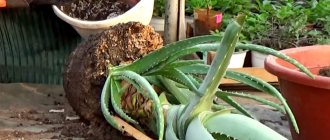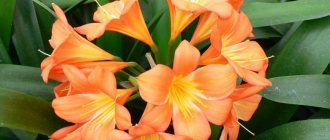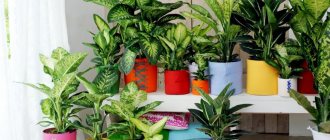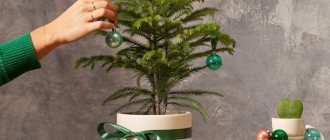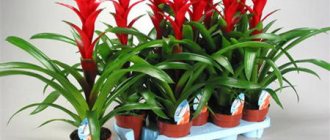Most readers will agree that in a home where family health is a top priority, there is sure to be a place for an indoor aloe vera plant. This pet is extremely popular in Russia since time immemorial. The historical path of the plant as a medicine lasts more than 4 thousand years.
Aloe vera is a flower, the first images of which were distinguished on the walls of the temples of ancient Egypt, venerable 6 thousand years old. This is a great representative of succulents - plants that store water in order to survive during prolonged dry times. In such harsh, hot conditions of the African continent, the hardy and unpretentious aloe vera was born. For this reason, growing a flower at home will not be difficult even for a novice amateur gardener.
However, there are often cases of poor health and even death of a flower, accustomed to a “Spartan” way of life, due to gross violations of the conditions of detention and rules of care. Based on the materials in this article, our acquaintance with the family doctor will take place. Here we will reveal the secrets of successfully growing aloe vera, features of planting and care, describe effective methods of propagating the flower and warn about possible difficulties. The florists' tips will be the highlight of the acquired knowledge about the miracle plant.
In its uncultivated form, growing in the vast expanses of the Arabian Peninsula, the Canary Islands and Madagascar, aloe vera reaches 3 m in girth. In indoor conditions, the height of the flower rarely exceeds 60 cm. The medicinal plant of the lily family has a dense rosette of gray-green fleshy leaves about 45 cm long, completely covered with white dotted spots and edged with denticles. The rosette arrangement of leaves minimizes the evaporation of life-giving moisture in desert conditions with an arid climate, from where many succulents came to our apartments. The root system is poorly developed. In its natural habitat, flowering can be observed every 2-3 years. And only under favorable indoor conditions can a 90-centimeter flower shoot, on the top of which are clusters of yellow tube-shaped flowers, please us with its appearance once every 10 or 20 years in the spring. After flowering, the plant throws out seed pods on the stems. However, the seeds usually do not have time to ripen.
Modern man, having appreciated the unique healing properties of the plant, cultivated it on a grand scale, planting entire plantations and building processing factories. To take advantage of the ability of a medicinal plant to disinfect the air, as well as emergency healing help right at home, flower growers of various ranks acquire aloe vera on their windowsills. This plant is the leader in the top five of all known 500 species of aloe with medicinal power.
Planting/growing
You will bring freshly purchased aloe into your home, most likely, in a cramped pot. The following signs will help determine the need for a transplant:
- the diameter of the above-ground part of the bush was more than twice the diameter of the pot;
- plant growth is inhibited;
- the root system completely occupied the internal volume of the container.
Allow the plant to adapt to its new location for several weeks, and then proceed with replanting. The answer to the question of how to transplant aloe vera into another pot must begin with a description of the planting container and the composition of the soil.
Succulents feel good in low pots - bowls. For overgrown aloe, choose a more spacious but flat container. It is better to give preference to ceramic material, since it releases excess moisture into the atmosphere, preventing it from stagnating in the root area. Before using for its intended purpose, the pot is washed with soap and disinfected, and the ceramic pot is kept for an hour in a superphosphate solution.
A special purchased soil mixture is considered the best for succulents. In the absence of one, you can prepare your own mixture of leaf soil, coarse sand and humus. Expanded clay, walnut shells or crushed red brick are used for drainage. To achieve good drainage quality, the soil surface is also covered with pebbles.
In the spring, aloe vera is transplanted at home from a smaller pot to a larger one, but only if absolutely necessary. Please note that you need to plant at the same depth each time.
At the bottom of the prepared pot, place a generous layer of drainage of at least 3-4 cm, a little soil mixture and transfer the plant along with the roots and earthen lump to a depth of about 4 cm. Fill the voids formed at the walls with soil. Moisten thoroughly and stop watering for 2-3 weeks so that the plant takes root safely.
It must be remembered that heavy aloe vera leaves and a weak root system can cause the flower to fall on its side. Florists advise adding stability to the plant by securing it in the area where the aerial part emerges with two or three stones.
How to plant aloe vera: creating conditions
Aloe vera is considered the most popular variety of this plant in Russia. Almost every family has a pot of it. It is unpretentious and has a number of healing properties.
It is necessary to create comfortable conditions for the culture to grow normally:
- air temperature from +11 to +27 degrees;
- air humidity up to 70%;
- timely feeding;
- watering once a week;
- pruning to avoid too many leaves on the bush;
- replant every 2–3 years.
Important. Aloe is a desert plant, so it adapts well to almost any conditions. The only thing it is afraid of is the cold.
It is worth taking a closer look at how to plant it correctly.
Land selection
It is necessary to choose a soil that will be as close to natural as possible. You can buy it at a specialty store. However, some gardeners prefer to do it themselves.
In this case, you must be guided by the following principles:
- soil acidity should be weak or neutral;
- Perlite, gravel, vermiculite, brick chips or charcoal are suitable for baking powder;
- It is necessary to use turf soil as the main soil element, which is mixed with deciduous soil, coarse sand and humus.
Reference. The soil must be laid out in layers. There should be sand on top, soil in the middle, and about 2-3 cm below for drainage. If the moisture stagnates, the aloe roots will quickly begin to rot. Thus, it is quite easy to independently select the optimal soil composition.
Landing place
When choosing a landing site, consider the following:
- aloe requires a lot of sunlight;
- it is necessary that there are no drafts;
- It is required to ensure that the air temperature is not below +10 degrees.
It is best to place the pot with the plant on the south side so that it receives enough light.
Pot
There are some requirements when choosing a pot:
- it must be made of clay or plastic;
- there should be holes in it to allow excess moisture to drain;
- The pot itself should not be too large, otherwise the growth process will be slow.
Important. Today, many gardeners have aloe vera, but few know that it is necessary to replant the crop every 2-3 years. The size of the pot should be 3–5 cm larger.
Growing in the garden
A completely unusual thing for our latitudes would be to plant an indoor aloe vera flower in open ground on a personal plot. As it turned out, the hardy plant also adapted to outdoor conditions. If you choose this method, care will be greatly simplified: the need for periodic replanting and compliance with the watering regime disappears.
To create comfort for aloe in an open space, the future planting site is cleared of weeds, and the hole is filled with soil familiar to succulents with a 40 percent sand content. Before planting, the roots of the plant should be dried in a dark place for three days. Now you can safely place the home healer directly in the prepared soil. To prevent uninvited weed neighbors from settling in the tree trunk again, florists recommend filling the area around the aloe with stones, and at the same time adding elements of desert decor to the garden. Spoiled leaves that have lost their decorative properties are used as a medicinal and cosmetic product for skin and hair, and as a growth stimulant for vegetable and horticultural crops. The leaves, cut with a thin knife, are wrapped in opaque paper and stored in the refrigerator for at least 10 days to complete the fermentation process. Then they squeeze out the juice and use it for good at their own discretion.
Pre-winter preparation consists of insulation with covering material and wrapping with film. In winter, watering is stopped.
Medicinal properties and uses
Benefits and contraindications
Aloe vera is widely used for medicinal purposes.
Internal use of Aloe Vera juice:
- The juice made from the leaves of this plant serves as a good laxative;
- Created medicinal preparations containing squeezed aloe vera juice are effective in the fight against gastritis;
- Also, the squeezed juice of this plant helps reduce stomach acidity;
- Helps against chronic colitis;
- Aloe vera syrup with added iron is effective in treating anemia;
- Used for migraines;
- Helps with neurosis;
- Highly effective in the fight against ulcers and bronchial asthma.
External use of juice:
- Helps with the formation of purulent wounds;
- Eliminates streptococci;
- Fights E. coli;
- This juice is effective in the fight against diphtheria bacillus;
- Promotes rapid healing of wounds;
- The leaves are often used to relieve sunburn.
Aloe vera is widely used in medicine to combat various diseases. The plant is officially included in the list of pharmaceutical drugs.
Despite the large number of useful components, Aloe Vera also has contraindications . Thus, preparations based on aloe vera are contraindicated for people with the following diseases:
- Gallbladder diseases;
- Liver disease;
- For cystitis;
- Haemorrhoids;
- Pregnancy and lactation.
Aloe Vera can be used for children only after consulting a doctor!
Also read: Pachypodium or Madagascar palm care and popular types
Recipes
To prepare the juice, you will need to cut off the lower or middle leaves of a healthy plant. After which they need to be washed well, dried and placed in the refrigerator for 7 days. After this time, you can prepare to squeeze the juice.
There are many different recipes using Aloe B. The article discusses the most popular recipes using this plant.
- Recipe for using aloe vera to improve digestion and after suffering a serious illness:
Required:
-Aloe juice-150 grams
-Honey-250 grams
-Strong red wine-350 grams
All ingredients are mixed and left for five days. The prepared mixture must be consumed three times a day, after meals.
- Recipe for an exhausted body :
Required to mix:
-Half a glass of aloe juice
-Crushed walnuts - 500 grams
-Honey-300 grams
-Sourced lemon juice. You need to use 3-4 lemons.
It is required to consume the resulting mixture three times a day before meals.
- Against cough:
– 30 gr. Aloe V. juice
– 30 gr. lingonberry juice
– 10 gr. liquid honey
Mix everything, take 2 tablespoons 4 times a day.
Aloe vera for face
This type of succulent is very popular in the field of cosmetology. Cosmetics containing this plant are recommended for owners of sensitive skin prone to various allergic reactions. Numerous creams and masks containing Aloe V. help in the fight against age spots, provide protection from the effects of environmental factors, and enrich the skin with nutrients.
It is noted that the use of masks and creams based on aloe vera has a great effect on the skin. Aloe vera is most valued in the fight against psoriasis, purulent discharge and the appearance of acne.
You can apply freshly squeezed juice daily to your skin, or add a couple of drops to your face cream.
Mask to maintain youthful skin:
– 2 tbsp. spoons of Aloe V. juice
– 2 tbsp. spoons of liquid honey
Mix and apply to cleansed skin once a week for 20-30 minutes. Can be stored in the refrigerator.
Aloe vera for hair
The plant has a beneficial effect on the scalp and hair roots. Aloe V. is widely used to eliminate the following pathologies:
- Copes with dandruff
- Helps with hair loss
- Helps with baldness
- Has healing properties for split ends
Advantages:
- Adds volume to hair
- Creates thick hair structure
- Adds shine to hair
- Gives strength to hair roots
Aloe vera juice is used to treat hair. The juice is rubbed into the scalp daily. After a positive result, the procedures can be applied 1-2 times during the week.
Aloe vera is a unique plant that is widely used in medicine and cosmetology. This plant, rich in nutrients, is also loved by flower growers all over the world and is used everywhere. Aloe vera is one of the most popular plants living in homes; it looks great in the interior and is easy to care for.
Care
Most often, the beginning of a passion for floriculture coincides with the purchase or acceptance of just a couple of pots of succulent plants as a gift. Among them, in every second case there is a place for aloe vera. Houseplants in this group are easy to care for. To grow well, they need conditions similar to those to which they are accustomed in their natural desert and semi-desert habitat. This is an abundance of sunlight, high-quality drainage, fresh air, watering during the growth period, coolness and dry soil during dormancy. For good development and longevity, plants need a full period of winter dormancy and being outdoors in the summer.
Proper care of aloe vera at home involves following certain rules:
- temperature - moderate from spring to autumn, in winter - not lower than 10°C;
- lighting - bright light on a south-facing window sill, some direct sunlight is required;
- watering - abundant as the soil surface dries, in winter - rare;
- air humidity - spraying the leaves is not necessary, fresh air is important;
- propagation by stem and leaf cuttings, pups and seeds.
Temperature
Aloe vera, unlike most houseplants, prefers contrasting day and night temperatures. The flower feels comfortable when the temperature on the thermometer in the room is from 18 to 22 degrees, but not higher than 30ºC. During the dormant period in winter, a coolness of 12 to 14 degrees is required, but not lower than 10ºC. The climate of most living spaces is suitable for the plant. If you send it to the balcony in fresh air for the summer, you should protect it from rain and drafts. By the end of autumn, it is necessary to promptly find a room with cool air for hibernation in ideal conditions.
Where according to signs you can put
In fact, this perennial can be placed absolutely anywhere, but in order to fill your home with positive energy, you should choose the most suitable place for the pot:
- Children's room. The plant will protect the baby, prevent the development of disease and purify the air. True, during the flowering period, aloe needs to be moved to another place. The flowers have a strong aroma that causes headaches.
- Workshop. The flower will create protection and protect you from injury.
- Living room. In places where all family members and guests often gather, with the help of perennials it will be possible to create harmony and avoid conflict situations. In addition, the flower will promote rapprochement and mutual understanding.
- Hallway. Thanks to aloe, you will be able to attract good luck into your home and create protection against the penetration of negative energy.
The perennial will also have a positive effect if placed in the kitchen, bedroom or office.
Watering
The answer to the question of how to water aloe vera at home is extremely simple. The same as most indoor plants: moderately, keeping the surface layer of soil slightly moist, not allowing it to dry out. During hibernation, watering is limited as much as possible to once a month or even twice. Florists recommend ensuring that water does not get on the leaves or run off into the rosette. By watering the flower at the root, you will be able to avoid rotting of the green mass.
High air humidity is not required, therefore, there is no need to spray the leaves. In order for the plant to breathe freely, it is important to provide an influx of fresh air by ventilation, or take it out of the room. An effective way is to wipe the leaves from dust and dirt with a damp cotton cloth or sponge.
How to make agave bloom at home?
Aloe blooms very rarely, about once every 20 years (with good care, perhaps earlier), mainly in the cold season. Most often, only one flower appears, always in the axils of the upper leaves. The spectrum of colors can vary from bright yellow to red. In order to help the plant bloom, you need to provide it with a period of rest.
The aloe flower contains a lot of nectar, due to this it has a strong, specific, although pleasant, smell.
Aloe blooms more than once every hundred years, as is commonly believed: flowering can be achieved with proper care
Reproduction
Propagating aloe vera at home is not difficult. There are different ways: rooting cuttings, leaves and tops; root shoots; seeds.
The last method is used infrequently. It is not possible to collect the seeds yourself due to rare cases of flowering and incomplete ripening. The solution is to purchase it at a specialized store.
Cuttings, leaves and tops are rooted using the same technology. Planting material that has reached a length of at least 8 cm and located closer to the stem is cut off. The top should have 6-7 leaves. Dry the cut parts in a dark place for 5-7 days to tighten the cut area. Then the material is immersed in moistened sand 1 cm deep and waiting for rooting and the appearance of new leaves.
The most effective method of propagation has proven to be through the dispersal of children - side shoots growing along the stem of the flower, and their further rooting in individual containers.
Advantages and disadvantages of seed growing
Now breeders are developing new varieties that are significantly superior to their wild predecessors in decorative qualities. But the price of new products is very high, so in recent years there has been an increasing interest in seed propagation of aloe. Numerous publications indicate that an agave grown from a seed has a much greater chance of pleasing its owner with flowering compared to a plant grown from a propagated non-flowering specimen.
It has become very easy to purchase a bag of seeds, and the survival rate of plants when planted from seeds is much higher than when cuttings or growing from shoots or children.
But the seed method also has disadvantages:
- The main one is that two years pass from the moment of planting to the acquisition of decorative properties, and not everyone is able to wait that long.
- Some gardeners complain that purchased aloe seeds either do not germinate at all, or germinate poorly and unevenly.
- Also, when sowing a mixture of different varieties, only in the fourth or even sixth month their distinctive varietal characteristics become clear.
Pests and diseases
If you follow the rules for caring for aloe vera in a pot at home, the plant acquires lasting immunity against diseases and insects. However, damage to fungal diseases, root and dry rot occurs. This is where treating the affected plant with fungicides will come to the rescue.
If scale insects begin to overwhelm you, wipe with a cloth soaked in alcohol where it has settled on the leaf. A solution of a systemic insecticide will instantly help against spider mites, thrips and mealybugs.
The reliability of aloe vera - a family doctor who is always ready to rush to the aid of household members - is difficult to underestimate. This healing plant deserves caring care beyond any doubt! And as a rare bonus, aloe vera will give you a moment of its unique flowering.
| Growing | Bright light on a south-facing window sill, requires some direct sunlight. Contrasting temperature day and night, during the growing season 18-22°C, in winter no lower than 10°C. Watering abundantly as the soil surface dries out; in winter, watering is rare. |
| Humidity | Spraying the leaves is not necessary; fresh air is important. |
| Feeding and pruning | Fertilize from March to November once every 1-2 months with a complex universal fertilizer, or special for succulents. Needs sanitary pruning. |
| Flowering period | Once every 10-20 years in spring or summer only in favorable conditions. |
| Landing, transplant | Plant in a wide flat pot with soil containing sand. Replant once every 2 years in the spring or 3 weeks after purchasing a new plant. |
| Reproduction | Most often - stem and leaf cuttings, children. |
| Pests | Scale insects, spider mites, thrips, mealybugs. |
| Diseases | Fungal diseases, root and dry rot. |
Magical properties of the plant
This beautiful perennial has a number of magical properties and is able to eliminate negative energy. In the rooms where he stands, breathing becomes much easier, and illnesses and misfortunes disappear on their own. Moreover, it is not only huge, overgrown crops that have this effect. Even a very small escape can protect the inhabitants of the house from illness and trouble.
To protect your home from demonic evil, it is recommended to hang a dried leaf of this plant above the front door. Thanks to this, evil forces will not be able to break the powerful biofield.
Another strong talisman is the dried leaves, stems and roots of the plant. They are placed in a small bag and hung around the neck.
With the help of this amulet the following results can be achieved:
- create protection from damage and the evil eye;
- avoid all sorts of troubles;
- attract good luck;
- achieve success in all endeavors;
- achieve financial well-being;
- find love.
